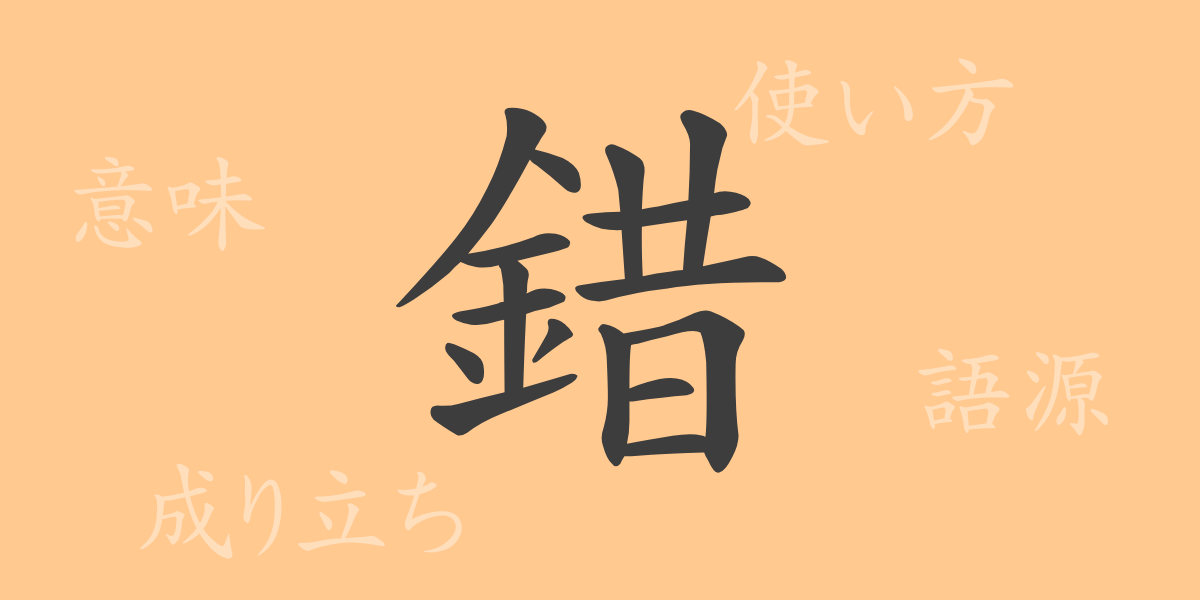The richness of the Japanese language is expressed through kanji, each character holding deep and complex meanings. The kanji “錯” (サク, saku) is commonly used in daily life, but its origin and diverse usage are fascinating when explored in depth. In this article, we will delve into the world of “錯”, examining its origins, meanings, and modern-day usage.
Origin of 錯 (サク, saku)
The kanji “錯” (サク, saku) is composed of the character for metal “金” (かね, kane) and “昔” (むかし, mukashi), which means to intermingle. This combination symbolizes the mixing of metals, leading to meanings such as “to mix”, “to confuse”, or “to mistake”. As ancient Chinese metalworking technology developed, this kanji began to be used in various contexts.
Meaning and Usage of 錯 (サク, saku)
“錯” (サク, saku) means “to mix up”, “to confuse”, “to mistake”, or “to err”. It also indicates situations where things are intricately intertwined or intermixed. In Japanese, many words and idioms use this kanji, appearing in both daily conversations and specialized contexts.
Readings, Stroke Count, and Radical of 錯 (サク, saku)
Understanding the kanji “錯” (サク, saku) requires knowing its readings and structural components:
- Readings: The on’yomi (音読み) reading is “サク” (saku), and the kun’yomi (訓読み) readings are “まぎ.れる” (magi.reru), “まぎ.らす” (magi.rasu), “まぎ.らわす” (magi.rawasu), and “まぎ.らわしい” (magi.rawashii).
- Stroke count: “錯” (サク, saku) has a total of 17 strokes.
- Radical: The radical is “金” (かね, kane), relating to metals.
Idioms, Phrases, and Proverbs Using 錯 (サク, saku) and Their Meanings
There are numerous idioms, phrases, and proverbs incorporating “錯” (サク, saku). Here are a few examples:
- 錯覚 (さっかく, sakkaku): An illusion or misperception. Recognizing something incorrectly based on false sensory information.
- 錯乱 (さくらん, sakuran): A state of confusion or disarray, leading to impaired judgment.
- 錯綜 (さくそう, sakusou): A complex and entangled situation.
- 錯誤 (さくご, sakugo): An incorrect thought or judgment.
These expressions indicate states where perceptions or thoughts deviate from accuracy, rooted in the core meaning of “錯” (サク, saku).
Conclusion on 錯 (サク, saku)
The kanji “錯” (サク, saku) has been used to represent errors, confusion, and complex situations from its formation to the present day. Its rich meanings and applications enhance the breadth of Japanese expression, demonstrating the depth of the language. When you encounter “錯” (サク, saku) in daily life, recalling its historical and meaningful background can enrich your linguistic experience.

























